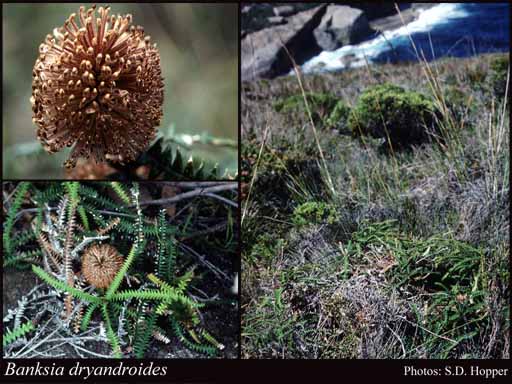- Reference
- Hort.Brit. [Sweet] 56 (1828)
- Conservation Code
- Not threatened
- Naturalised Status
- Native to Western Australia
- Name Status
- Current
Intricately branched, non-lignotuberous shrub, 0.2-1 m high, to 1.5 m wide. Fl. brown/orange-yellow, Sep to Dec or Jan. Grey sand, sandy loam over gravel. Low-lying flats.

Scientific Description
Shrubs, 0.50-0.70 m high; branchlets hairy. Leaves petiolate, alternate, 30-120 mm long, 6-10 mm wide, hairy; petiole 0.5-1 mm long; lamina flat, once divided, pinnately divided, divided to the midrib, with 10-28 lobes on each side, the margins revolute. Inflorescences villous (with soft, shaggy, weak and straight hairs), yellow, orange or brown; innermost bracts 4-7 mm long, hairy. Perianth 12-15 mm long, hairy, all over, limb apex tomentose (with matted or tangled, soft, woolly hairs), without awns; pistil 12-15 mm long, hooked, style glabrous. Follicles hairy, hirsute (with long, rough and coarse hairs), elliptic, 15-30 mm long. Flowers in January, September, October, November or December. Occurs in the South-west (SW) Botanical Province(s), in the Jarrah Forest (JF) or Esperance Plains (ESP) IBRA subregion(s).
Distribution
- IBRA Regions
- Esperance Plains, Jarrah Forest.
- IBRA Subregions
- Fitzgerald, Southern Jarrah Forest.
- IMCRA Regions
- WA South Coast.
- Local Government Areas (LGAs)
- Albany, Cranbrook, Jerramungup, Plantagenet.